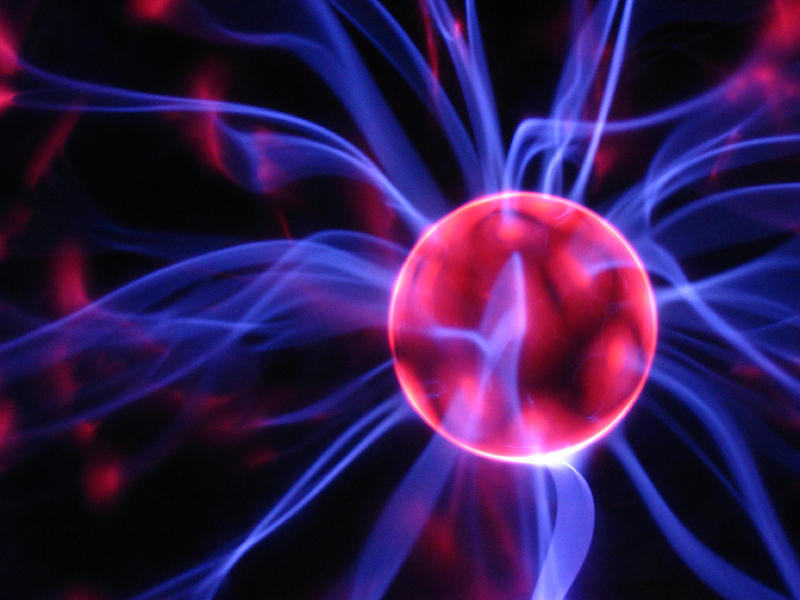 The smallest thing around is the atom, which has three main parts – the core (nucleus) houses the protons and neutrons, and the electron zips around in a cloud around the nucleus.
The smallest thing around is the atom, which has three main parts – the core (nucleus) houses the protons and neutrons, and the electron zips around in a cloud around the nucleus.
The proton has a positive charge, and the electron has a negative charge. In the hydrogen atom, which has one proton and one electron, the charges are balanced. If you steal the electron, you now have an unbalanced, positively charge atom and stuff really starts to happen. The flow of electrons is called electricity. We’re going to move electrons around and have them stick, not flow, so we call this ‘static electricity’.
These next experiments rely heavily on the idea that like charges repel and opposites attract. Your kids need to remember that these activities are all influenced by electrons, which are very small, easy to move around, and are invisible to the eye.
Please login or register to read the rest of this content.


Hi! Why do some materials take on a positive charge and some take on a negative charge?
Electricity travels when the atoms in a substance have extra electrons to carry that energy. Or, in the case of lighting, when there is such a buildup of electrons, that the electricity can travel through the air. More on that in a minute.
When something carries electricity, it is an electrical conductor. If an atom’s electrons are busy holding molecules together, then they can’t be used to carry electricity, so that substance is an electrical insulator. For instance, each atom in a copper wire has extra electrons, so copper is a good electrical conductor.
Pure, distilled water is an insulator. But water we encounter in day to day life contains other substances that make water electrically conductive.
As electrons build up in thunderclouds, they seek a path to travel to the ground and that huge amount of electricity will take the easiest path. Swimming pool water, which contains salts and / or chlorine makes a very good conductor. If lightning strikes the water, the electricity travels through the water and anything else in the water, including people.
Have a question from a student I could not answer. How does electricity go through water? Why do I have to stay away from water (and get out of the swimming pool) during lightning storms?
Thanks!